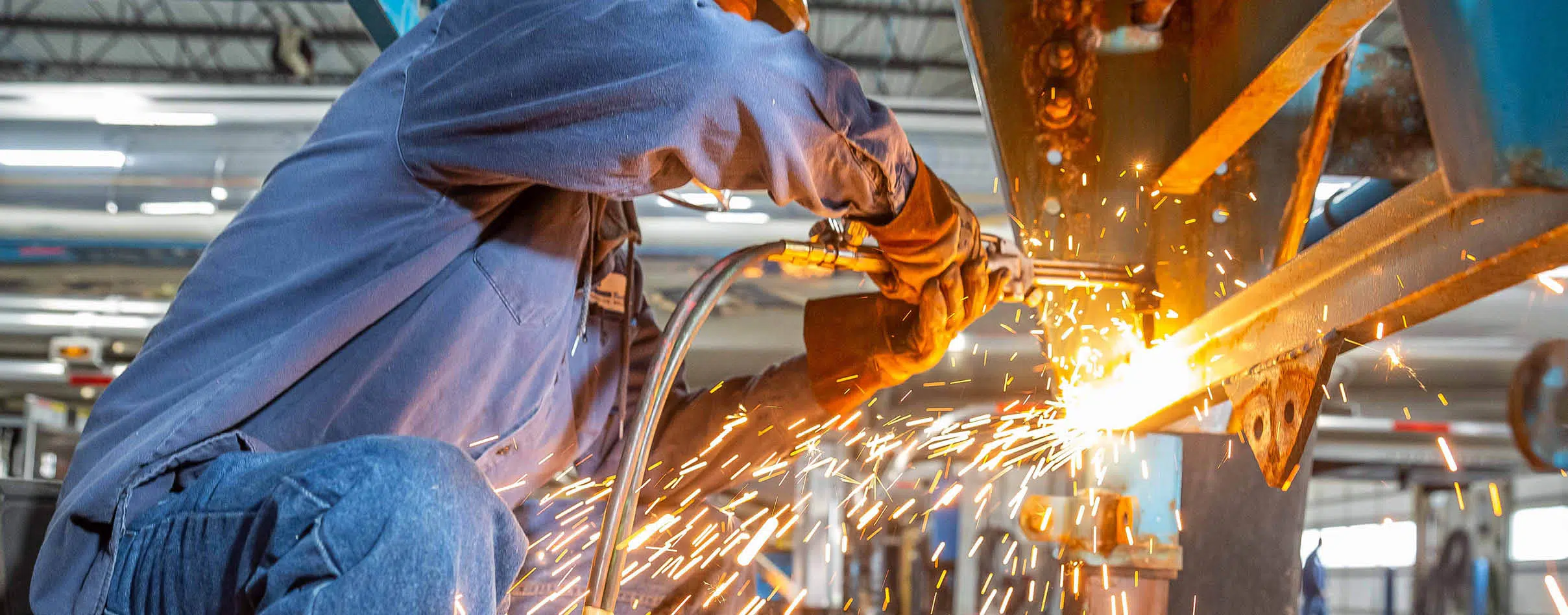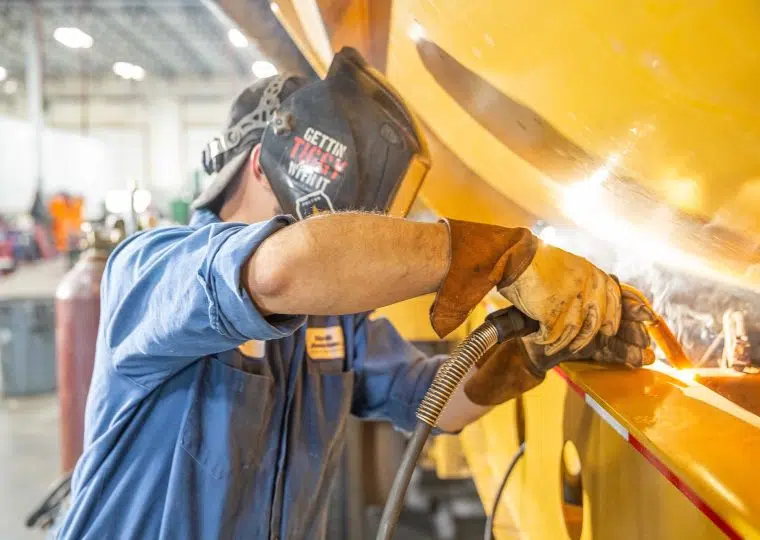If you drive a heavy-duty truck that’s ever needed welding repairs, you’ve probably heard of code welding, and you may have wondered how it related to simply being a welder. A “coded welder” is someone that has been taught welding and has subsequently demonstrated proficiency in a particular welding type.
Commonly Used Welding Codes
There are many different welding codes, but we’re going to cover the most common ones here. If you travel outside the US, you may encounter some of the other types, but they are rarely seen in the states. There are welding codes for just about every region of the world, however, the four most common American codes are:
- American Welding Society (AWS)
- American Petroleum Institute (API)
- American Society of Mechanical Engineers (ASME)
- American Society for Non-Destructive Testing (ASNT)
AWS Welding
AWS code welding is welding that is aligned with the requirements of the American Welding Society. The AWS standard covers more than 240 codes and practices that were designed to align with the standards created by the American National Standards Institute (ANSI). AWS codes cover everything from general welding terms to metal-specific structural welding requirements, welding in the automotive sector, industrial and robotic welding standards, and even welding requirements for the aerospace industry.
API Welding
The API welding standard is one of the oldest, having begun back in 1924. It covers more than 500 different welding performance standards across both the oil and natural gas industry. This is the type of code welding that is required to repair or install oil and gas pipelines in petroleum processing facilities and when welding \anything for the chemical, gas, and oil industries.
ASNT Welding
The ASNT welding code is the standard set forth by the American Society for Non-Destructive Testing and covers an incredibly wide range of welding requirements and applications. The ASNT welding codes are used to define qualifications as well as certifications of non-destructive testing personnel. ASNT welding certification is considered a general-purpose welding code that is adhered to by many other standards organizations.
ASME Welding
The ASME welding code was developed by the American Society of Mechanical Engineers, and it includes the standards which must be met when performing welding repairs for boilers or other pressure-bearing vessels. This code lays out the standards governing the construction of boilers, constructing and installing piping, set the qualifications needed for welding and brazing in pressurized applications, and even construction requirements for nuclear facilities.
What are the different types of welding?
There are four primary types of welding that you may encounter. Each one has specific uses and situations where it is more effective than other types. There are also situations where each won’t be ideal and where another welding process should be used. We’ll take a brief look at each of the four main welding processes and how they compare.
The main welding processes are:
- Gas Tungsten Arc Welding (TIG)
- Gas Metal Arc Welding (MIG)
- Flux-Cored Welding (FCAW)
- Stick Welding or Shielded Metal Arc Welding (MMA/SMAW)
TIG
Tungsten Inert Gas, or TIG welding, uses a tungsten electrode and filler metal surrounded by an inert shield gas like helium or argon. TIG welding can be used on an extremely wide range of metal types, from ferrous and structural steel to less common or nonferrous metals like copper, aluminum, brass, and even gold. TIG welding creates no slag, no spattering, and no hazardous fumes from contaminants unless they’re present already in the metal.
MIG
Metal Inert Gas, or MIG welding, has a longer history than TIG welding and has been in use since the 1950s. It uses a bare electrode to arc to the metal being welded while also using a shielding gas like argon. Like TIG welding, MIG welding must be done away from wind or breezes so that the shield gas is retained. MIG welding is popular for thinner metals, as well as aluminum, which is often difficult to work with. Many welding hobbyists use MIG welding since it has the ability to weld just about anything under a threshold thickness.
Fluxed Cored
Flux-cored welding, also known as FCAW, uses similar equipment to MIG welding, only it doesn’t require a shielding gas. The shielding for the weld is done by the melted flux, which will create slag on the finished weld. This means, however, that flux-cored welding can be used in more situations than TIG or MIG welding and is more portable since it lacks a shielding gas and can be done outdoors.
MMA/SMAW
Shielded Metal Arc Welding, also known as “stick welding,” uses a conductive rod or “stick” as the electrode. This electrode contains the needed shielding material or flux and is gradually consumed as the weld is laid. Stick welding is incredibly versatile, highly portable, and needs the least complex welding equipment of all welding types. Stick welding is regarded as one of the easier methods of welding to learn.
What is a Code Welder?
n the simplest terms, a coded welder is someone at least 18 years old that possesses either a diploma or GED and has been trained in one or more welding processes. Once training or apprenticeship has concluded, a coded welder will have passed an evaluation or test demonstrating their proficiency in a particular welding code. There are many different welding codes that a welder can test for, and the qualifications vary significantly.
A coded welder will be able to perform welding tasks aligned with the code standards put in place by the code organization they are testing for. These codes can be highly complex and often have very specific requirements that the welder will need to meet in order to become recognized as a coded welder.
What is the difference between a coded welder and a certified welder?
Many people think “coded welder” and “certified welder” are the exact same, but they actually mean very different things. A coded welder will have a documented ability to adhere to a specific welding code, which is useful in more specific applications and industries. A certified welder, on the other hand, may or may not be coded but will have a documented level of aptitude with welding skills.
This certification is often available through testing with a third party who is not the welder’s employer. Welding certification often consists of a Welding Procedure Specification (WPS), a Procedure Qualification Record (PQR), or a Welder Performance Qualification (WPQ).
Coded Welding for Heavy Duty Trucks and Trailers at Blaine Brothers
For repairs on heavy-duty trucks, trailers, and construction equipment, it’s important that you use an appropriately coded welder. Not only do you want to ensure that your welder is experienced with the repairs that you need, but making sure those repairs are done by a coded welder can be essential for being able to ensure your equipment and operate it safely. If you need coded welding work done for your truck or trailer, reach out to NAT today to talk with coded welding professional!


